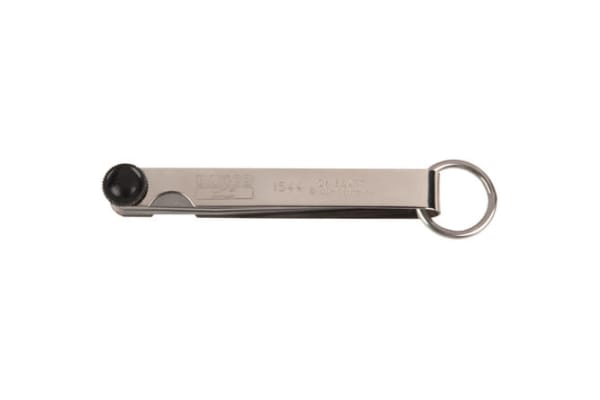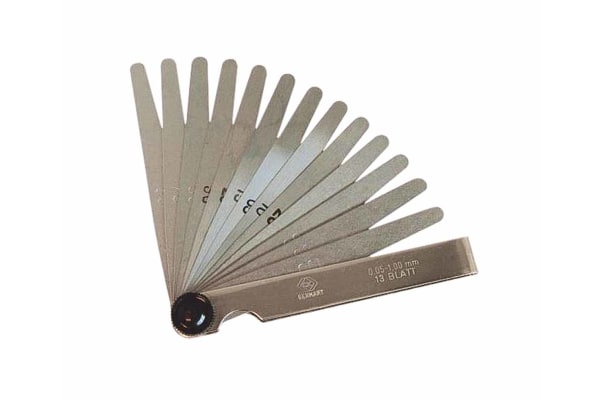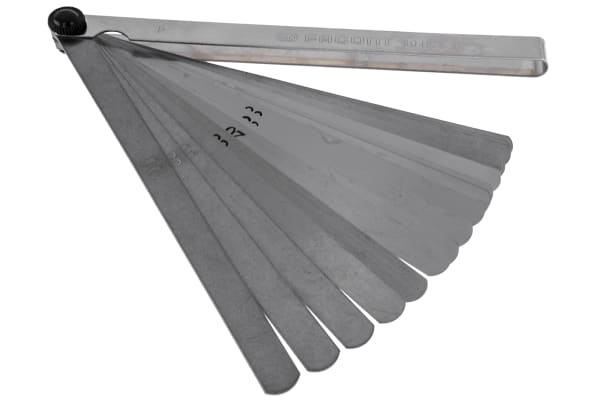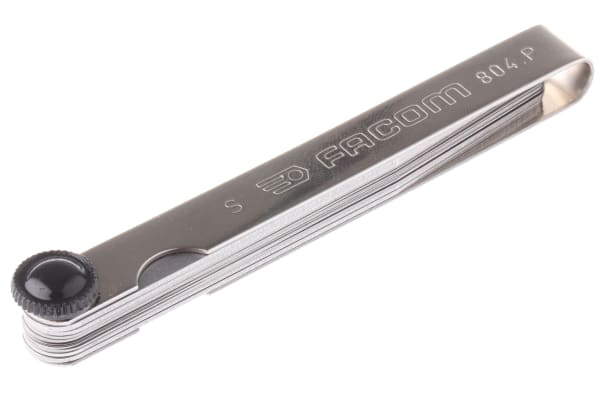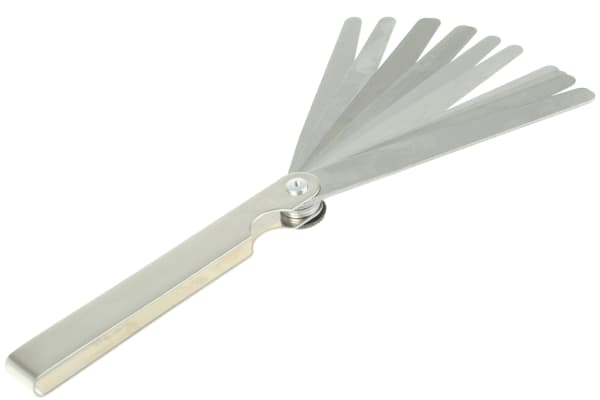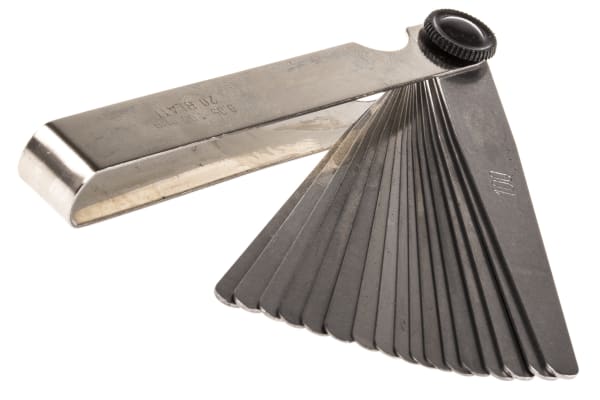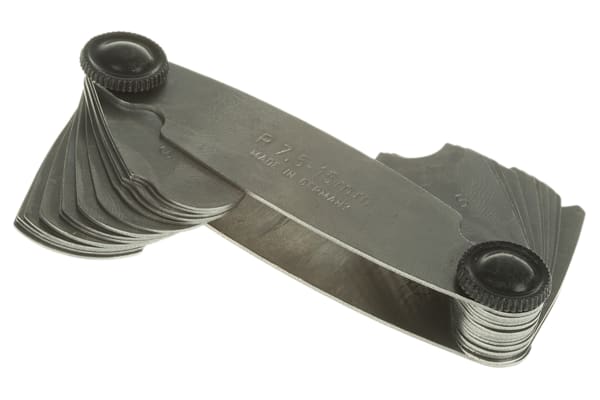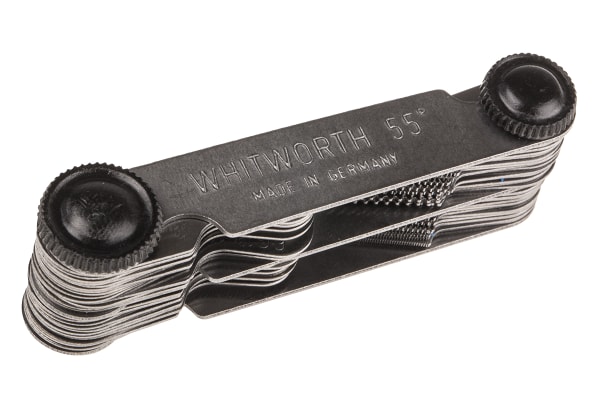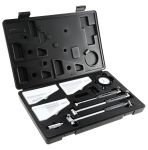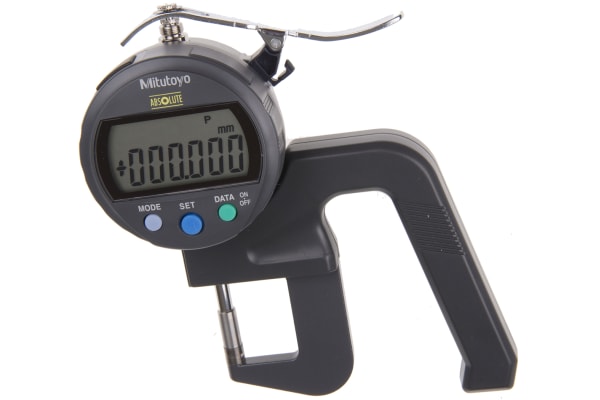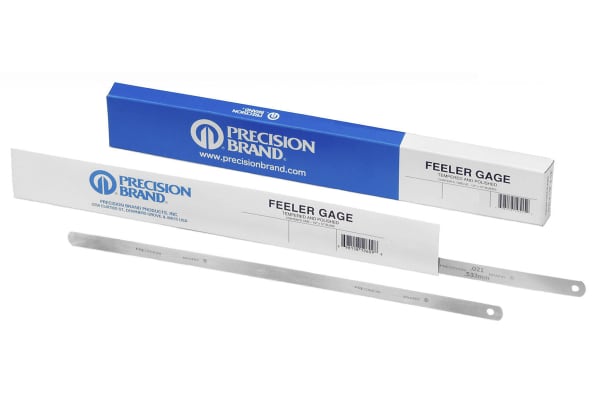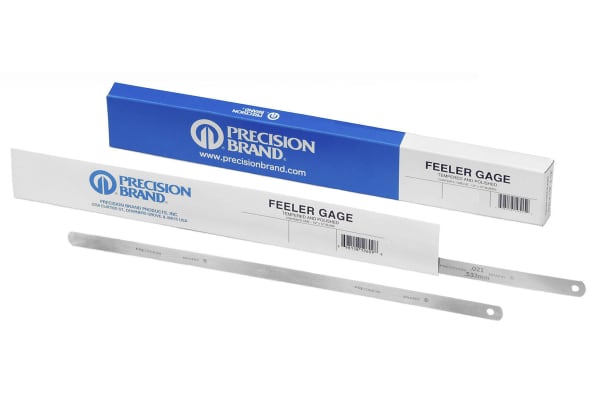Gauges
A feeler gauge is a hand-held measuring tool used to measure the size of small gaps between two objects that are in close proximity. The tool has a number of folding metal strips (also known as blades or leaves) which are machined to specified thickness levels. They are usually made out of tempered tool steel or stainless steel and should be rust resistant. You can find out more in our complete guide to feeler gauges.Measurements are given in millimetres or inches and can be found on each individual strip. A feeler gauge fits into small gaps which can be less than 5.08mm and can take measurements as small as 0.02mm to 5.08mm.The tool is ideal for use in spaces where other measuring devices such as a tape measure could not fit. They are flexible and easy to bend so they can fit into difficult positions.Feeler gauges are mostly used in engineering to accurately measure the clearance between two parts to ensure that mechanical parts are in safe working order.Parts of a feeler gauge:Case – either plastic or steel, and protects blades/leaves when tool is not in use, compact storageLocking deviceLeaves or blades – thin strips of metal with inscribed measurements on each referring to the thickness of the bladeWhat can feeler gauges measure?Can be used for checking: tappet clearances, spark plug gaps, distributor points, bearing clearances and piston ring gaps.Different types of feeler gauge:Go NoGo feel gauge – thick base and a thinner top, the thinner end is able to ‘go’ into the gap and the thicker body will not ‘no go’Straight lead feeler gauge – blades are consistently parallelTapered feeler gauge – blades thin out towards the tipDouble ended gaugeOffset gauge – blades are bent towards the tip for easier access in most motor vehicle applications and work in restrictive areasFeeler strip – blades are not connected in a set and either end can be used to measure
-
Bahco TAH1544 Feeler Gauge, 26 Blades
IDR675,386.71 -
CK T3527M 413 Steel Feeler Gauge, 13 Blades
IDR188,592.22 -
Facom 804 Feeler Gauge, 19 Blades
IDR520,569.07 -
Facom 804.AM Feeler Gauge, 19 Blades
IDR744,299.44 -
Facom 804.L Feeler Gauge, 19 Blades
IDR1,091,590.23 -
Facom 804.P Feeler Gauge, 19 Blades
IDR442,530.91 -
Kleffmann & Weese 1703 Feeler Gauge, 13 Blades
IDR118,001.25 -
Kleffmann & Weese 1705 Feeler Gauge, 20 Blades
IDR203,906.16 -
Kleffmann & Weese Radius Gauge Metric 15 Blades 15.5 to 25mm
IDR324,844.33 -
Kleffmann & Weese Radius Gauge Metric 16 Blades 7.5mm to 15mm
IDR202,647.48 -
Kleffmann & Weese Radius Gauge Metric 1mm to 7mm
IDR293,167.55 -
Kleffmann & Weese, 52 Blades Thread Pitch Gauge, Whitworth/Metric thread type
IDR197,402.98 -
Mitutoyo 511-921-20 Dial Bore Gauge Gauge Set, 3 piece
IDR13,698,948.67 -
Mitutoyo 547 Thickness Gauge, 0mm - 10mm, ±20 μm Accuracy, 0.001 mm Resolution, LCD Display
IDR14,132,563.93 -
Precision Brand 09110 Feeler Gauge, Single Blade Blades
IDR1,068,933.99 -
Precision Brand 09202 Feeler Gauge, Single Blade Blades
IDR644,234.38Pack (1 Pack of 5) -
Precision Brand 09203 Feeler Gauge, Single Blade Blades
IDR656,296.73Pack (1 Pack of 5) -
Precision Brand 09204 Feeler Gauge, Single Blade Blades
IDR383,582.73Pack (1 Pack of 5) -
Precision Brand 09205 Feeler Gauge, Single Blade Blades
IDR346,451.67Pack (1 Pack of 5) -
Precision Brand 09210 Feeler Gauge, Single Blade Blades
IDR258,448.96Pack (1 Pack of 5) -
Precision Brand 09215 Feeler Gauge, Single Blade Blades
IDR131,112.50Pack (1 Pack of 5) -
Precision Brand 09220 Feeler Gauge, Single Blade Blades
IDR219,639.66Pack (1 Pack of 5) -
Precision Brand 09300 Feeler Gauge, Single Blade Blades
IDR852,336.14Pack (1 Pack of 5) -
Precision Brand 19120/19K1 Feeler Gauge, Single Blade Blades
IDR636,577.41Pack (1 Pack of 5)



